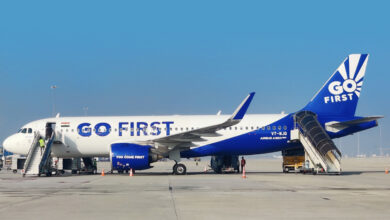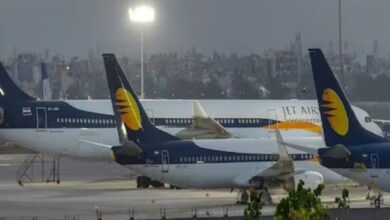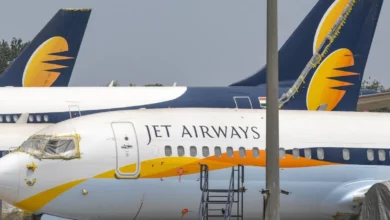Jet Airways
-
Trends

ED Seizes ₹538 Crore in Assets Linked to Jet Airways and Founder Naresh Goyal in Money Laundering Case
ED Seizes ₹538 Crore in Assets Linked to Jet Airways and Founder Naresh Goyal in Money Laundering Case In a…
Read More » -
Trends

Resurgence Takes Flight: JKC Infuses ₹100 Crore to Revive Jet Airways in 2024
Resurgence Takes Flight: JKC Infuses ₹100 Crore to Revive Jet Airways in 2024 In a significant development for the aviation…
Read More » -
Trends

Jet Airways’ Creditors Demand ₹350 Crore Payment from Jalan Kalrock Consortium
Jet Airways’ Creditors Demand ₹350 Crore Payment from Jalan Kalrock Consortium In a significant turn of events, Jet Airways‘ creditors…
Read More » -
Trends

Rescuing Go First Is Unimaginable Until The Engine Issues Are Resolved.
Go First, a financially troubled airline, is not expected to receive a bailout from the government with its persistent engine…
Read More » -
Trends

Why revive Jet Airways when it’s in such a mess 2022
Why revive Jet Airways when it’s in such a mess 2022 According to sources familiar with the situation and emails…
Read More » -
Trends

Employees Of Jet Airways To Face Salary Cuts, Leave Without Pay
Jet Airways has temporarily reduced the salaries of some of its employees by up to 50 percent and put some…
Read More » -
Trends

Jet Airways Sends Employees On Leave Without Pay, Enforces Salary Cuts For Some: Report
The Jalan-Kalrock Consortium(JKC), which won the contract to revive the airline, had to implement some severe cost-cutting measures, which include…
Read More » -
Trends

Sanjiv Kapoor, CEO of Jet Airways, clarifies that no employees are being let go while also addressing staff pay reductions and LWP.
Sanjiv Kapoor, the CEO of Jet Airways, tweeted on Friday about the airline’s stalled revival and reaffirmed that no employees…
Read More » -
Trends

Jet Airways appoints four new senior executives
Jet Airways appoints four new senior executives Jet Airways on Monday announced that it has appointed four new senior executives…
Read More »

